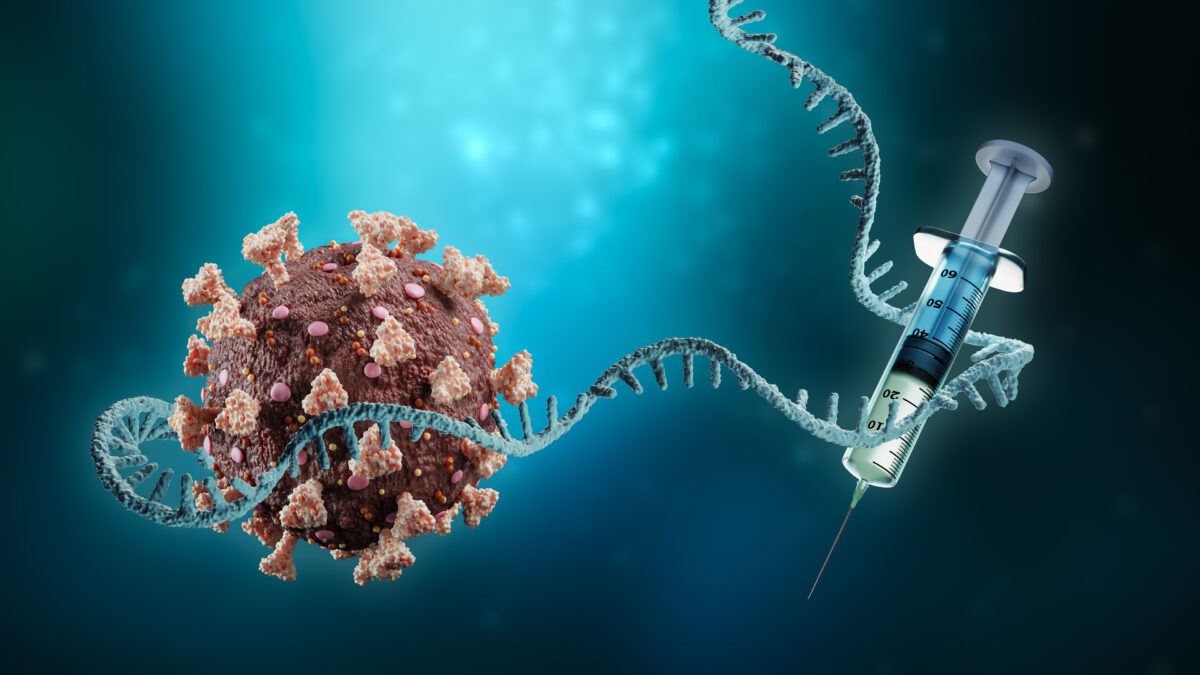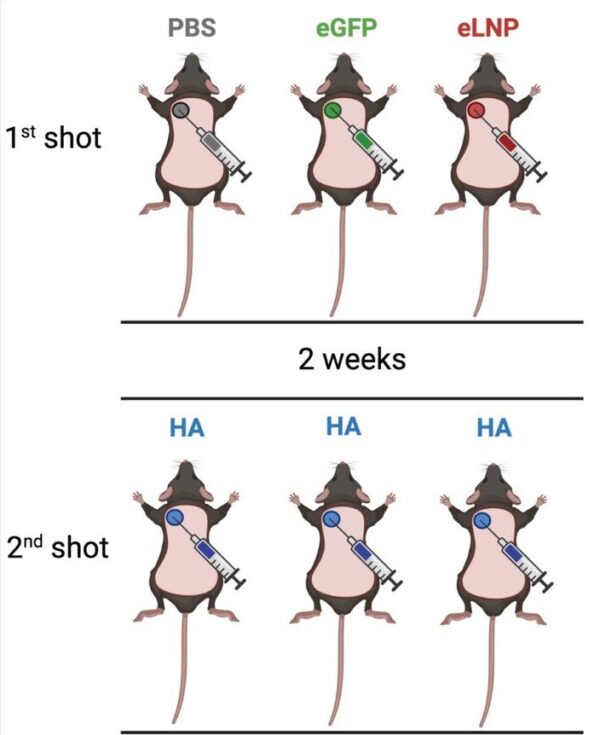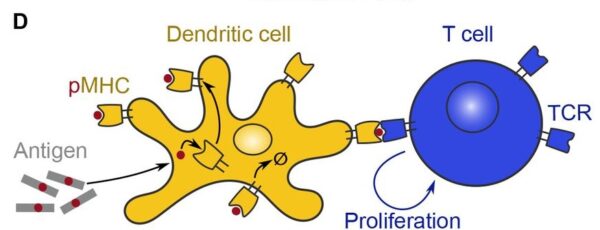Inflammatory mRNA Nanoparticles Inhibit and Alter Immune Response: Pre-Print Study
A recent preprint study has shed light on why adverse events have been observed following a COVID-19 messenger RNA (mRNA) vaccination.
The study, led by researchers from Thomas Jefferson University, found that the lipid nanoparticles (LNPs) used to transport mRNA in COVID-19 vaccines could “inhibit” and “alter” immune responses in mice.
LNPs are shells of lipids that envelope mRNA to prevent degradation and detection by our body’s immune system.
LNPs are not mRNA, simply an envelope to transport the mRNA cargo.
Both the Pfizer and Moderna mRNA COVID-19 vaccines use LNPs to deliver mRNA spike protein sequences into human cells. Once human cells received the mRNA sequences, the cells will then manufacture spike proteins, triggering an immune response.
It was originally intended that the LNPs discreetly deliver mRNA sequences into the cells to produce spike proteins, and in doing so, form immunity against the COVID-19 virus.
However, many studies in mice have since found that the LNPs, claimed to be non-toxic and safe, are actually highly inflammatory.
These nanoparticles are highly durable and can last for 20 to 30 days in the body. While they persist in the body, it is likely they will continue to activate the immune system, leading to immune exhaustion and non-responsiveness.
The Thomas Jefferson study also shared similar findings. The researchers investigated how LNPs affect the immune system by injecting mice with the same LNPs used in Pfizer’s vaccines, and some mice were even double-dosed.
Inflammation and immune responses in mice are not sure signs that the same will happen in humans. Nonetheless, mice have long been used to test for safety and efficacy in drugs for human use; signs of immune problems are an indication of possible health risks in humans.
The authors found that mice that received two doses had a reduced immune response on their second injection as compared to mice that only received one dose.
“The mRNA-LNP (nanoparticle) vaccine platform induces long-term unexpected immunological changes affecting both adaptive immune responses and heterologous protection against infections,” the authors wrote.
Pre-Exposure to mRNA Nanoparticles Reduce Innate Cell Numbers
Mice that were injected with two doses of LNPs had a reduced number of innate immune cells, the first-responder immune cells.
The authors wanted to find how the LNPs, the shell that wraps around mRNA, affected mice by injecting them with different variations LNPs.
The mice were split into three groups, all three groups received two injections, albeit with different contents.
The mice were split into three groups, all three groups received two injections, albeit with different contents.
For the first injection, most mice were given an injection of LNP. Half were given LNPs containing mRNA sequences and another half were given empty LNPs with no mRNA inside.
The remaining mice were given an injection of salted water. These mice are used as the baseline for comparison as salted water injections are not supposed to introduce any changes to the body.
Two weeks later, all three groups were given the same LNP injection containing mRNA sequences for an influenza protein (HA). The second injection allowed their cells to make HA proteins, which triggered an immune response. It was intended that this immune response would then make the mice immune against the influenza virus.
The three groups of mice and what they were vaccinated against. The first group was given saline for the first shot, the second group was given a mRNA lipid nanoparticle vaccination against a jellyfish protein, the third group was vaccinated with an empty mRNA LNP. All three groups were given a vaccination of influenza HA protein sequenced in mRNA and packaged in mRNA LNPs. Modified figure of “Pre-exposure to mRNA-LNPs or LNPs significantly inhibits subsequent adaptive immune responses induced by the mRNA-LNP vaccine” by B. Igyártó and affiliates, www.biorxiv.org/content/10.1101/2022.03.16.484616v2.full, the material is available under Public License creativecommons.org/licenses/by/4.0.(Courtesy of Igyártó et al.)
The researchers found that following the second injection, all mice had developed immune defense against the influenza virus.
The authors observed mice that were given two doses of LNPs were more resistant to an influenza infection as they lost less weight. Oddly enough, these same mice also had a lower immune response to the flu vaccine with fewer immune cells activated.
The authors speculated that their “resistance” is likely not from strengthened immunity, but a product from an alternative pathway triggered by LNPs. It is unknown if this “resistance” will apply to other infections and may only be applicable to influenza.
This is because the study found that mice that were more “resistant” to the flu were actually more susceptible to fungal infections.
The researchers infected mice with Candida albicans, the mice that received two doses lost more weight and had poorer control over the infection, indicating an alteration in the innate immune response.
Further investigations showed that these mice had a lower number of neutrophils, which are the most common first responder immune cells.
The job of neutrophils is to patrol the body and attack indiscriminately when encountering something foreign, therefore a reduced number of neutrophils put an individual at a greater risk of infection.
Since an uncontrolled fungal infection, particularly C. albicans, is often a sign of weakened innate or first responder immune response, the authors therefore suspected that reduced neutrophil numbers may have contributed to the fungal outbreak.
LNPs cause inflammation, and certain inflammatory pathways reduce the production of blood cells. The authors speculated that the two doses of LNPs some mice received may have caused greater inflammation leading to a decline in blood cell production and low neutrophil counts.
Though this is speculation and it is uncertain if the effects in mice would apply to humans, there have been reports in vaccinated individuals of the sudden onset of severe aplastic anemia, a condition where the body can no longer make enough blood cells, particularly red blood cells.
There have also been some reports of COVID-19 vaccinated individuals developing rare fungal diseases and others with worsening of pre-existing fungal diseases.
Though serious fungal disease does not automatically mean a weak immune system, nonetheless, serious fungal infections “are most common among people with weak immune systems,” writes the U.S. Centers for Disease Control and Prevention (CDC).
Antigen Numbers Reduced in Mice with High Nanoparticle Exposure
Within the immune system, there are the first responder (innate immune cells) and the second responders (adaptive immune cells).
The first responders mount an immediate attack upon encountering something foreign. However, their attacks are nonspecific and often cannot fully clear infections.
Therefore the adaptive immune cells, also known as T and B cells serve as our second responders.
They are activated around a week into the infection and clear infections by mounting potent and specific attacks.
To activate adaptive immune cells, T and B cells must be presented with information on the pathogen. In the case of Sars-Cov-2, it can be a section of the spike protein.
APCs (antigen presenting cells), a type of first responding cell bring pieces of the virus, bacteria, or infectious particle to the adaptive T or B cells. This will activate the T or B cell, triggering an adaptive immune response.
The image below shows a dendritic cell (APC), activating a T cell by presenting it with an antigen, a toxic or foreign substance.
Read More Here: Epoch Times








